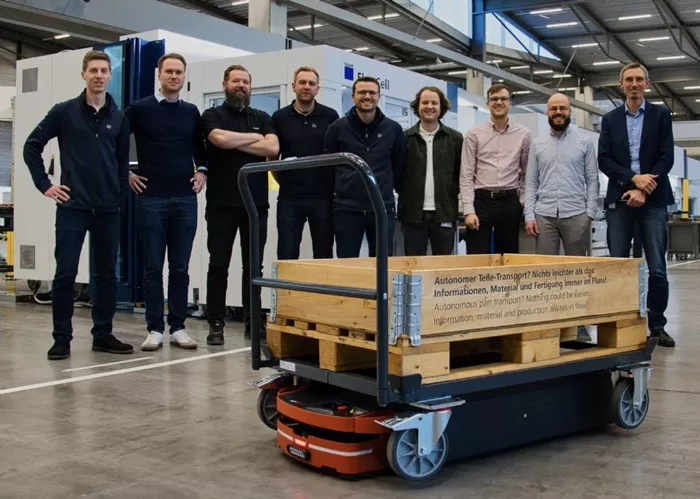Automating material transport in manufacturing can be a complex and costly process for many companies. Traditionally, it requires a significant investment to digitalise and network the entire production system. However, Trumpf and Safelog have introduced a simpler, more cost-effective solution known as the ‘Material Flow Kit’. This system enables mobile robots to transport materials through the production process with minimal installation effort. The system can be controlled via a web application, accessible on any mobile device within the user’s network.
Christian Frei, Product Manager at Trumpf, explained, “The Material Flow Kit allows production staff to focus more on value-adding activities. Transport orders for the mobile robot can be easily created with just a few clicks in the web app. This not only helps address the shortage of skilled workers but also boosts productivity in sheet metal processing.”
The Material Flow Kit was first showcased at Trumpf’s in-house trade fair, INTECH, marking its official launch. The system allows mobile robots to move materials across up to nine stations, including machines in the sheet metal production area, manual workstations, and the shipping area. Users can define up to eight transfer points for each station. When a production employee needs to transport processed parts, they can request the mobile robot via the web app, allowing the materials to be transferred to the robot on a pallet trolley without leaving their workstation.
The mobile robot is capable of carrying loads up to one tonne, making it suitable for most components in sheet metal production. Customers can also adjust the robot’s route if necessary, such as when a machine’s location changes, using the software provided.
Built-In Sensors for Seamless Navigation
When setting up the system, a Safelog technician guides the mobile robot through the factory with a tablet. The robot uses its built-in sensors to scan the environment and create a virtual map of the factory. The technician then configures the route, adding process steps at each station—such as bending, punching, and laser cutting—using the software tool. Once the setup is complete, the web application sends transport orders to the robot, allowing it to navigate autonomously and safely through the production process.
The Material Flow Kit is designed for companies that wish to digitalise their production gradually. Mr. Frei added, “After gaining initial experience with the Material Flow Kit, we recommend companies integrate the Trumpf Oseon software. This enables synchronization of material flow with the production plan, ensuring materials are always delivered where needed, without disruptions or paperwork.”
Trumpf customers can also use other robotic solutions from Safelog for their smart factories. Daniel Andreas Bühler from Trumpf’s partner management department stated, “By collaborating with leading companies in their respective fields, Trumpf can offer tailored complete solutions to each customer, all from a single source.”

